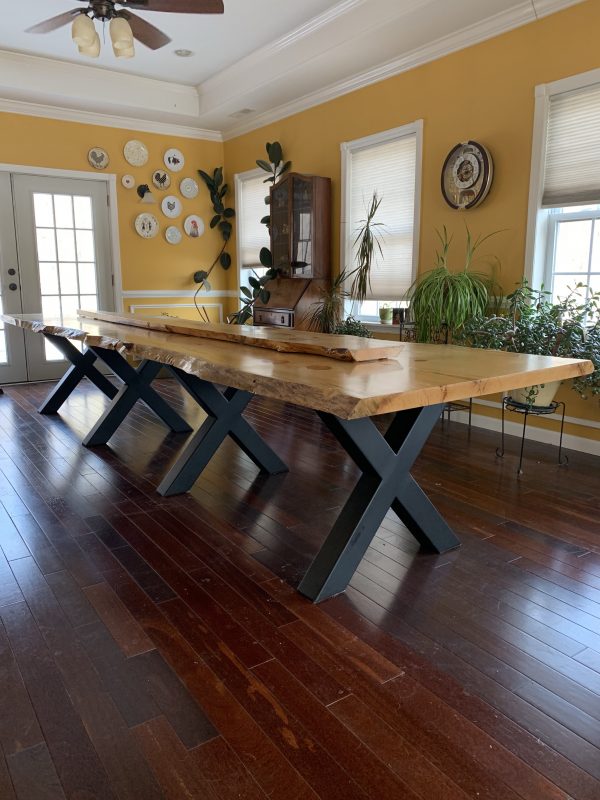The Top Trends in Dining Room Table Legs You Need to Know
The Top Trends in Dining Room Table Legs You Need to Know
Blog Article
Professional Tips for Installing Dining-room Table Legs for Optimum Stability
When it comes to setting up eating area table legs, attaining optimum stability is critical for both functionality and aesthetics. What specific techniques can enhance stability even better?
Pick the Right Legs
When choosing the proper legs for your eating area table, it is necessary to consider both functionality and looks. The legs you pick will dramatically impact the total design and security of the table. Evaluate the table's intended usage; if you anticipate regular celebrations, tougher legs, such as those made from strong wood or metal, may be more suitable, as they provide enhanced sturdiness and support.
Standard dining tables normally vary from 28 to 30 inches in height, so make sure the legs straighten with this standard for convenience. Tapered legs can include a contemporary touch, while transformed legs might communicate an extra traditional visual.

Select Appropriate Hardware
Just how can the ideal hardware enhance the stability and durability of your dining-room table? The option of ideal equipment is important to ensuring that the legs of your table are securely connected and able to endure normal use. High-quality screws, bolts, and brackets offer the necessary strength to support the weight of the table, as well as any additional tons put upon it throughout dishes or celebrations.
When picking screws, decide for those made from durable products such as stainless steel or brass, which withstand corrosion and preserve honesty over time. The size of the screws is equally important; they should permeate deeply into the table's structure without compromising integrity. For bolted connections, think about using lock washing machines to avoid loosening up due to vibration or movement.
Additionally, utilizing corner brackets can include added assistance, specifically for bigger tables or those with heavier tops. These brackets distribute weight evenly and help preserve the table's form. Making certain that the equipment you select is ideal for the details materials of your table will certainly better improve its overall security and longevity, permitting you to appreciate your eating experience for several years to come.
Ensure Appropriate Placement
Correct alignment of eating area table legs is vital for both visual charm and useful stability. To attain ideal placement, start by gauging the distance from the table's edges to the leg accessory factors.
Utilize a level throughout setup to confirm that each leg is perpendicular to the table top. It is suggested to note the desired leg positions on the bottom of the table with a pencil or concealing tape prior to safeguarding them.
Moreover, ascertain the positioning after the initial screws are tightened, as modifications might be needed before completely this hyperlink safeguarding the hardware. By focusing on appropriate positioning, you not just improve the table's overall design yet additionally ensure that it stays stable and useful for years ahead.

Think About Weight Circulation
After guaranteeing correct placement of the dining-room table legs, it is essential to think about weight circulation to enhance stability and capability. dining room table legs. Correct weight circulation is critical in stopping tottering and ensuring that the table can sustain its intended lots without threat of tipping or collapsing
When placing the legs, ensure they are positioned at equivalent ranges from the center of the table to uniformly disperse the weight across the structure. Consider the weight of the tabletop and any products that will regularly relax on it, such as attractive pieces or tabletop home appliances. Tables with larger surface areas ought to ideally have legs positioned closer to the corners, as this maximizes the base of support and minimizes the risk of instability.
Furthermore, if the table is meant for usage in a high-traffic area, consider making use of much heavier products for the legs or adding maintaining aspects, such as cross-bracing or a reduced rack - dining room table legs. These modifications can help preserve balance and avoid moving throughout use. Ultimately, a well-considered weight distribution strategy will dramatically enhance the table's overall performance, ensuring it stays a attractive and useful focal point for your eating room
Examination Stability Before Use
Examining the stability of the dining-room table prior to usage is a crucial step that needs to not be neglected. Making sure that the table is steady and safe and secure can prevent mishaps and extend the lifespan of the furnishings. Begin by using mild stress to numerous factors on the table surface area. Press down on the center and afterwards along the edges, observing any kind of wobbling or moving. Recognize the legs or joints that might call for modification. if the table reveals instability.
Next, examine that all bolts and screws are tightened correctly. Loose browse around here links can lead to instability and potential damage gradually. If required, use wood adhesive on joints to enhance stability, ensuring to enable appropriate drying out time.

Verdict
In conclusion, the installation of eating room table legs needs cautious consideration of materials, weight, equipment, and positioning circulation to accomplish optimum stability. By choosing high-grade bolts and sturdy legs, making certain accurate positioning, and dispersing weight evenly, the architectural stability of the table can be significantly improved. Carrying out go to this website a stability examination prior to routine use further makes certain that the table will stand up to daily stress, therefore giving a safe and reputable eating experience.
When it comes to mounting dining room table legs, accomplishing maximum security is critical for both performance and aesthetics. The legs you select will substantially influence the overall design and stability of the table (dining room table legs). Standard eating tables generally vary from 28 to 30 inches in height, so make sure the legs line up with this criterion for comfort.Proper placement of eating area table legs is vital for both aesthetic allure and functional security.In final thought, the installment of eating space table legs requires cautious consideration of materials, placement, weight, and equipment circulation to achieve maximum stability
Report this page